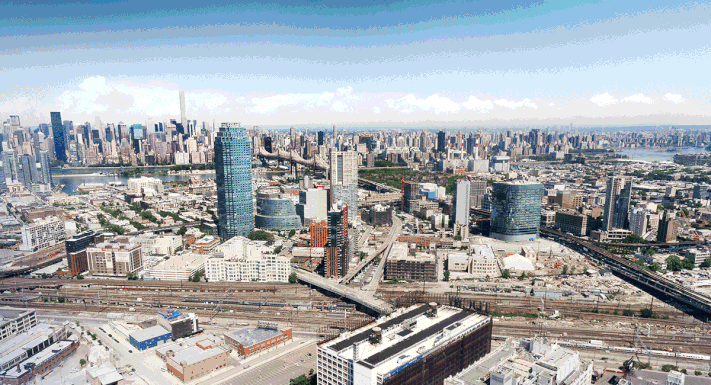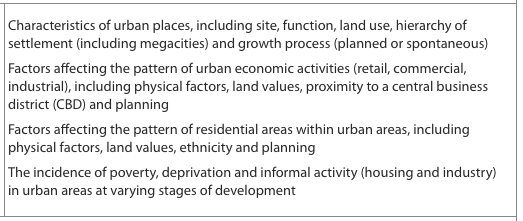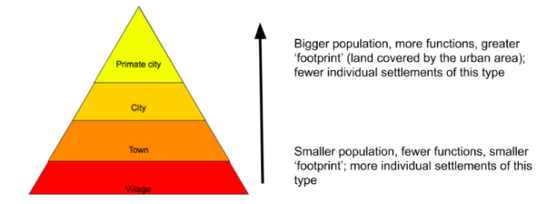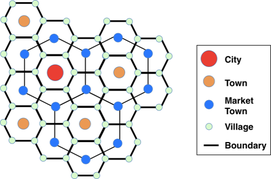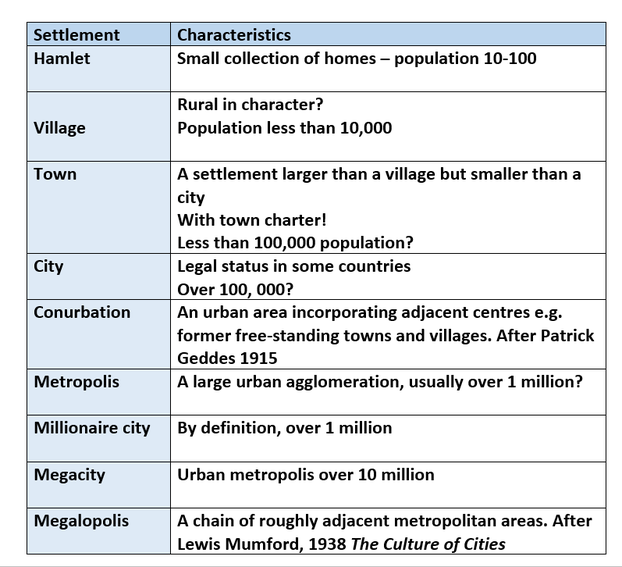1. The Variety of Urban Environments
Syllabus Link: The characteristics and distribution of urban places,
populations and economic activities
Characteristics of Urban Places
Activity: Characteristics of urban places
Reading: Growth processes - Planned vs spontaneous
Website: Urban Characteristics Terms (Geography Case Study.com)
Story Map: The age of megacities
Urban Characteristics Key Terms
Hierarchy of Settlements
Growth Processes
Planned
|
|
|
|
Spontaneous
|
|
|
Urban Characteristics Summary Video
Patterns of Urban Settlement
|
|
|
|
|
Reading: Land Use in New York
BBC Bitesize: Urban models in MEDCs BBC Bitesize: Urban models in LEDCs Website: Urban geography models Activity: Analysis of land use |
|
|
|
|
Activity: Factors affecting the pattern of urban economic areas
Reading: Factors affecting the pattern of urban residential areas
Activity: The family life cycle
Article: Urban fingerprints
Poverty & Deprivation
|
|
|
Patterns of poverty & deprivation
|
|
|
|
Article: Poverty is urbanizing
Activity: Deprivation in Detroit
Article: What are slums?
Article: Urban poverty & slums
|
|
|
The informal sector
Activity: Formal or informal sorting
Webpage: Bitesize - formal and informal
Webpage: The informal sector
|
|
|
London Case Study
|
|
|
London Case Study Intro
Activity: London urban characteristics
Wiki: London
Article: London - The world's most international city
Map: London google earth link
Video: London urban land use
Website: London's evolving urban form
Website: Mapping London (a great collection of interesting maps and visualizations)
Patterns of Deprivation
Data: Statistics & patterns on deprivation in London
Activity: London urban characteristics
Wiki: London
Article: London - The world's most international city
Map: London google earth link
Video: London urban land use
Website: London's evolving urban form
Website: Mapping London (a great collection of interesting maps and visualizations)
Patterns of Deprivation
Data: Statistics & patterns on deprivation in London
